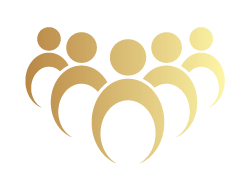Preparing for Workforce 2020
For at least 20 years, labor bureaus, demographers, census researchers, and statisticians have predicted the rise in population diversity and its impact on the workplace. Seeing the handwriting on the wall, proactive companies have already begun working toward diversifying their teams, and grappling with:
- An aging workforce;
- Millennials entering the workforce;
- Difficulty recruiting ethnic diversity;
- Rising number of consultant employees;
- Globalization of labor supply;
- Increasing number of intermittent/seasonal employees;
- Changing employee expectations;
- Changing work models (e.g., working remotely, flexible schedules); and
- Difficulty recruiting highly specialized employees.
For those organizations that have been slow to respond, it’s time to get started. Time waits for no company. The world is changing quickly, as technology drives many of today’s business trends, which results in shifting the ways we work.
As companies are adjusting to the influx of millennials, developing systems to retain the knowledge of retiring baby boomers and grappling with how to become more diverse, inclusive, and equitable, the year 2020, which once seemed far in the distance, is right around the corner.
2020 is the time when many workplace theorists said we’d see the clash of the ages with five generations in the workplace. Along with age, we are seeing the most diverse workforce in history. So, practically speaking, what does this mean for Wisconsin? For Madison? For your organization? How can you prepare, if you haven’t already begun, for the change in workplace trends?
Here’s a look eight steps you need to take to be ready for 2020:
- Know your why
Develop the case (business and/or moral imperative) for diversity, inclusion, and equity or do it because of the moral imperative.
- Work it out
Understand the identities within the LGBTQIA+ communities and the barriers individuals face with full legal, social, and employment inclusion.
- Manage the generations
Despite overlapping priorities among the five generations currently in the workplace, there are differing areas of importance depending on the generation. Varying life experiences means varying approaches to work, as well as values. So, relying on a one-size-fits-all approach to human resource management will not work. Flexibility in management style will be more critical than ever before.
- Accommodate more people with disabilities
In the U.S., 19.4% of non-institutionalized people have a physical disability, and only 52% of people with disabilities of working age are employed. Employers continue to be challenged to accommodate and fully integrate persons with disabilities into their organizations. In the coming decade, providing accommodation to employees will mean creating work environments that are flexible in terms of how and when work is completed, providing assistive devices that support employees in completing job duties, and creating inclusive work environments that allow every employee to fully engage in the workplace.
- Deal with race
Racial discrimination and racism continues to shape the experience of people of color in the workplace. A few recommendations to help eliminate racial discrimination in hiring, promotion, and everyday interactions are as follows:
- Reject the idea of “color-blindness” and embrace color brave;
- Understand how “the myth of meritocracy” operates;
- Know that racism isn’t always blatant and not only about individual actions;
- Educate staff, including all levels of managers, about unconscious bias;
- Collect information from exit interviews;
- Develop a comprehensive anti-racism statement and policy;
- Track and report race-based data to identify issues and monitor change;
- Take all incidents of discrimination and harassment seriously and handle them immediately;
- Train HR staff and hiring managers on bias-free hiring;
- Support the successful integration of immigrants into the workplace;
- Don’t assume that applicants who are immigrants lack the education, social skills, or business acumen needed to do the work. When screening applicants, focus on the qualifications, skills, and abilities; and
- Develop an internship or mentoring program for foreign-trained professionals.
- Step up mental health readiness
Mental health is gaining increased attention by occupational experts and is one of the fastest growing disability categories. It is also a major cause of short-term and long-term disability. Your company can prepare for the rise in mental health among employees by:
- Training managers how to create and maintain psychologically healthy environments and teams;
- Educating employees and raising awareness about the effects of unaddressed mental health issues at work;
- Establishing policies that effectively address mental health;
- Addressing harassment and ensuring your workplace is welcoming and respectful for all employees;
- Seeking and accepting employee feedback regarding workplace issues that may affect mental health; and
- Managing workloads for reasonability and manageable stress.
- Provide religious accommodation
Inclusive workplaces celebrate diversity, including religious diversity. Employees should be able to discuss their beliefs without promoting their religion.
- If you haven’t already, take time to develop a policy for religious accommodations;
- Be prepared to educate managers and employees understand their responsibility to accommodate employee and co-worker religious diversity; and
- Ensure all related policies are updated (e.g., scheduling, paid time off, dress code, etc.)
- Tackle unconscious bias and its effect on decision-making
Whether we realize it or not, our biases have a significant impact on how and why we make decisions about hiring, promotion, assigning high-profile projects, product development ideas, and more. Coach and train HR staff and managers about the following biases:
- First impressions
- Non-verbal behavior
- Personal discomfort
- Confirmation bias
- Affinity bias
- Stereotype bias
- Performance bias
- Gender bias
- Heightism
- Racial bias
- Anti-immigrant bias
The bottom line: Be flexible so that you can keep up with the ever-evolving workforce for 2020 and beyond. Be on the lookout for my next blog. I’ll explain more about the types of biases that affect workplace decision-making, especially hiring.



Leave a Reply
Want to join the discussion?Feel free to contribute!